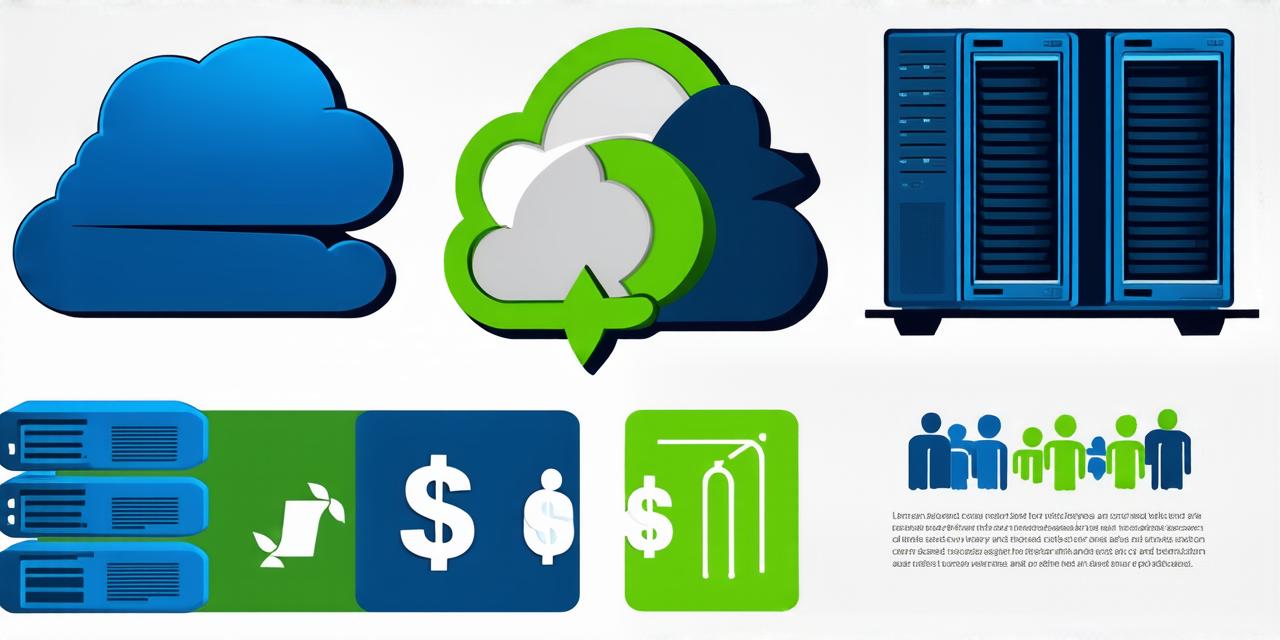Introduction
Amazon Web Services (AWS) is a cloud computing platform that provides a wide range of services to individuals and organizations. One of the most popular services offered by AWS is web hosting. In this article, we will explore the cost of AWS web hosting and help you understand how to make the most out of it.
Understanding AWS Web Hosting
Before we dive into the cost of AWS web hosting, let’s first understand what it is. AWS web hosting allows you to create and host websites on the cloud. With AWS, you can choose from a variety of web hosting services such as Elastic Beanstalk, EC2, and S3. Each of these services offers different features and pricing options.
Elastic Beanstalk is a fully managed service that makes it easy for developers to deploy and scale applications on the cloud. It comes with pre-configured environments that are optimized for web development. Elastic Beanstalk pricing starts at $5 per hour for the smallest instance and goes up to $80 per hour for the largest instance.
EC2 (Elastic Compute Cloud) is a service that provides virtual servers in the cloud. With EC2, you have complete control over your instances and can configure them to meet your specific needs. EC2 pricing starts at $0.10 per hour for the smallest instance and goes up to $4 per hour for the largest instance.
S3 (Simple Storage Service) is a storage service that allows you to store and retrieve data from anywhere on the web. With S3, you can choose from different storage classes that are optimized for different use cases. S3 pricing starts at $0.05 per GB per month for the infrequent access storage class and goes up to $0.15 per GB per month for the one zone-infrequent access storage class.
Factors Affecting AWS Web Hosting Cost
Now that we have a better understanding of what AWS web hosting is, let’s explore the factors that affect its cost.
Instance Type and Size
The instance type and size you choose will have a significant impact on your AWS web hosting costs. There are different instance types available in EC2 such as t2.micro, t2.small, t2.medium, and t2.large. The smaller the instance, the less expensive it is. Similarly, the larger the instance, the more expensive it is.
You can also choose from different instance sizes depending on your workload. The instance size determines how much memory and processing power your instance has. There are different instance sizes available such as n1-micro, n1-small, n1-medium, and n1-large. The larger the instance size, the more expensive it is.
Storage Class and Object Count

The storage class you choose in S3 will also affect your AWS web hosting costs. There are different storage classes available such as infrequent access, one zone-infrequent access, and reduced redundancy. The less frequently you need to access your data, the more cost-effective it is to store it in a lower-tier storage class.
The object count will also affect the cost of S3. If you have a large number of objects stored in S3, you may be charged for data transfer out of S3.
Geographic Region
The geographic region where your instances are located will also affect your AWS web hosting costs. AWS has data centers in different regions around the world, and each region has its own pricing. The closer your instances are to your users, the lower the latency, but the higher the cost.
Case Studies: Real-Life Examples of AWS Web Hosting Cost
Now that we have explored the factors that affect AWS web hosting costs, let’s look at some real-life examples to see how they actually impact the cost of web hosting.
Example 1: A Small E-commerce Site
A small e-commerce site with low traffic can be hosted on Elastic Beanstalk. The smallest instance type in Elastic Beanstalk costs $5 per hour, and the largest instance type costs $80 per hour.



